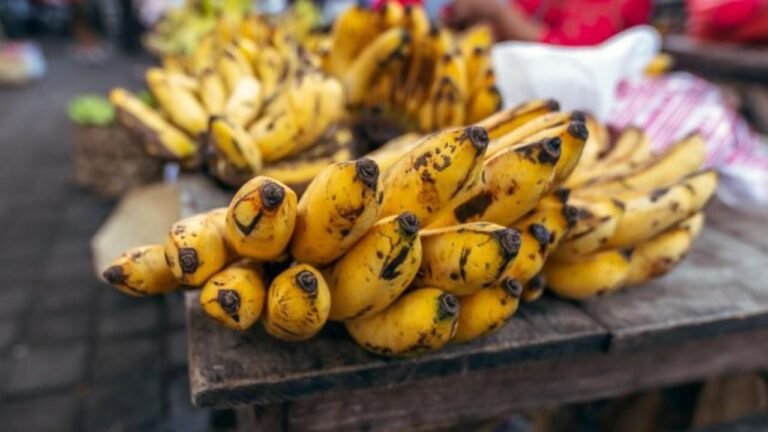Bananas, a staple in households everywhere, are facing an unexpected shortage. You might have noticed fewer bananas in stores, or even higher prices. This shortage isn’t just a simple supply and demand issue. It’s a complex result of various factors impacting the banana industry globally. These factors include labor disputes, disease outbreaks, climate change, and logistical challenges. Each of these causes contributes significantly to the banana shortage we’re experiencing today. Understanding these influences can help us appreciate the complexity and severity of the situation.
Impact of Labor Disputes and Port Strikes
One primary cause of the banana shortage, especially in the U.S., can be traced back to labor disputes. Specifically, the ongoing strike by the International Longshoremen’s Association (ILA) has had a notable effect. This strike is not just about bananas but involves essential negotiations over wages and job protection due to automation. Since this strike affects ports along the Eastern Seaboard and Gulf Coast, it also impacts crucial banana imports. These ports are integral points for bringing bananas from major brands like Dole and Chiquita into the U.S.
As port workers continue their negotiations, disruptions in banana imports and other goods are increasing. For many U.S. consumers, this has already led to shortages and could potentially impact prices in the grocery aisle. Not only are the workers fighting for fair compensation, but the strike is adding a layer of complexity to the already strained banana supply chain.
Threats from Disease Outbreaks
Another major concern for bananas worldwide is the spread of Fusarium Tropical Race 4 (TR4). This disease, also known as Panama Disease, poses a significant threat to global banana supplies. TR4 has been a concern since the 1950s, and its rapid spread in recent years has exacerbated the situation. It affects banana plantations in Latin America, Africa, and Australia, leading to substantial production losses.
Most commercial banana varieties, especially the popular Cavendish, lack genetic diversity. This makes them particularly vulnerable to TR4, as they cannot resist the disease. However, there are efforts underway to address this problem. Research is focused on developing disease-resistant banana varieties. For instance, Chiquita has developed the Yelloway One banana, resistant to TR4 and partially resistant to another threat, Black Sigatoka disease. This initiative offers a glimmer of hope for sustaining banana production amidst disease threats.
Effects of Climate Change
It’s impossible to discuss banana shortages without mentioning climate change. Over the past years, warmer temperatures have, in some regions, led to increased banana production. However, climate change is a double-edged sword. As temperatures rise and rainfall patterns change, banana yields are predicted to decline significantly by 2050 in several key regions.
Countries like India, Brazil, Colombia, Costa Rica, Guatemala, Panama, and the Philippines are expected to see declines in banana production. While some countries might temporarily benefit, such as Ecuador and Honduras, these gains are expected to be short-lived. The overall impact of climate change on banana production is likely to be negative, further complicating the supply situation.
Challenges from Logistical and Labor Issues
Logistical challenges, some stemming from the COVID-19 pandemic, have added to the banana shortage problem. Supply chains worldwide are still grappling with disruptions from the pandemic era, and extreme weather conditions like forest fires, floods, and droughts worsen the situation. These events disrupt transportation, making it difficult for bananas to reach their destinations.
Adding to this is the rising demand for organic bananas. While more consumers seek organic options, pricing issues and financial pressures from large multinational companies challenge farmers. These growers face increased costs but are often pressured to keep prices low. This dynamic drives further strain on the already complex banana supply chain.
Regional Variations in Impact
The banana shortage does not affect all regions equally. In the U.S., the strikes primarily impact bananas arriving through ports along the Eastern Seaboard and Gulf Coast. Meanwhile, other countries face different challenges. For instance, in Colombia, the spread of TR4 has prompted a state of emergency, severely impacting local farmers economically.
Conversely, countries like Ecuador and Mexico have managed to maintain a stable supply of organic bananas. They have adapted to challenges better than some other regions, thanks to geographical and climatic advantages. However, even they are not immune to the global trends affecting banana availability.
Strategies for Future Solutions
Given the multifaceted nature of the banana shortage, solutions must be equally multifaceted. Developing disease-resistant banana varieties like the Yelloway One is crucial. This approach can help mitigate the threat of diseases like TR4 and Black Sigatoka. In addition, sustainable farming practices need promotion to ensure long-term stability in banana supplies.
Fair pricing models can assist growers in maintaining economic viability without compromising quality. Investing in research and infrastructure for banana farmers also plays a significant role. These measures ensure a more resilient supply chain, helping us enjoy bananas for years to come.
Conclusion
The banana shortage is a complex and pressing issue, driven by labor disputes, disease outbreaks, climate change, and logistical challenges. Each of these factors has combined to create a situation that affects banana availability and pricing globally. Without proactive measures, this problem is likely to persist.
Efforts to develop disease-resistant banana varieties and promote sustainable farming are keys to addressing the shortage. As consumers, we can also participate in the solution by supporting fair trade and investing in sustainable products. These steps are crucial for safeguarding future banana supplies. For more insights into how industries adapt to changes, check BusinessSpec. This awareness and action will help us ensure a steady supply of one of the world’s favorite fruits: the banana.


